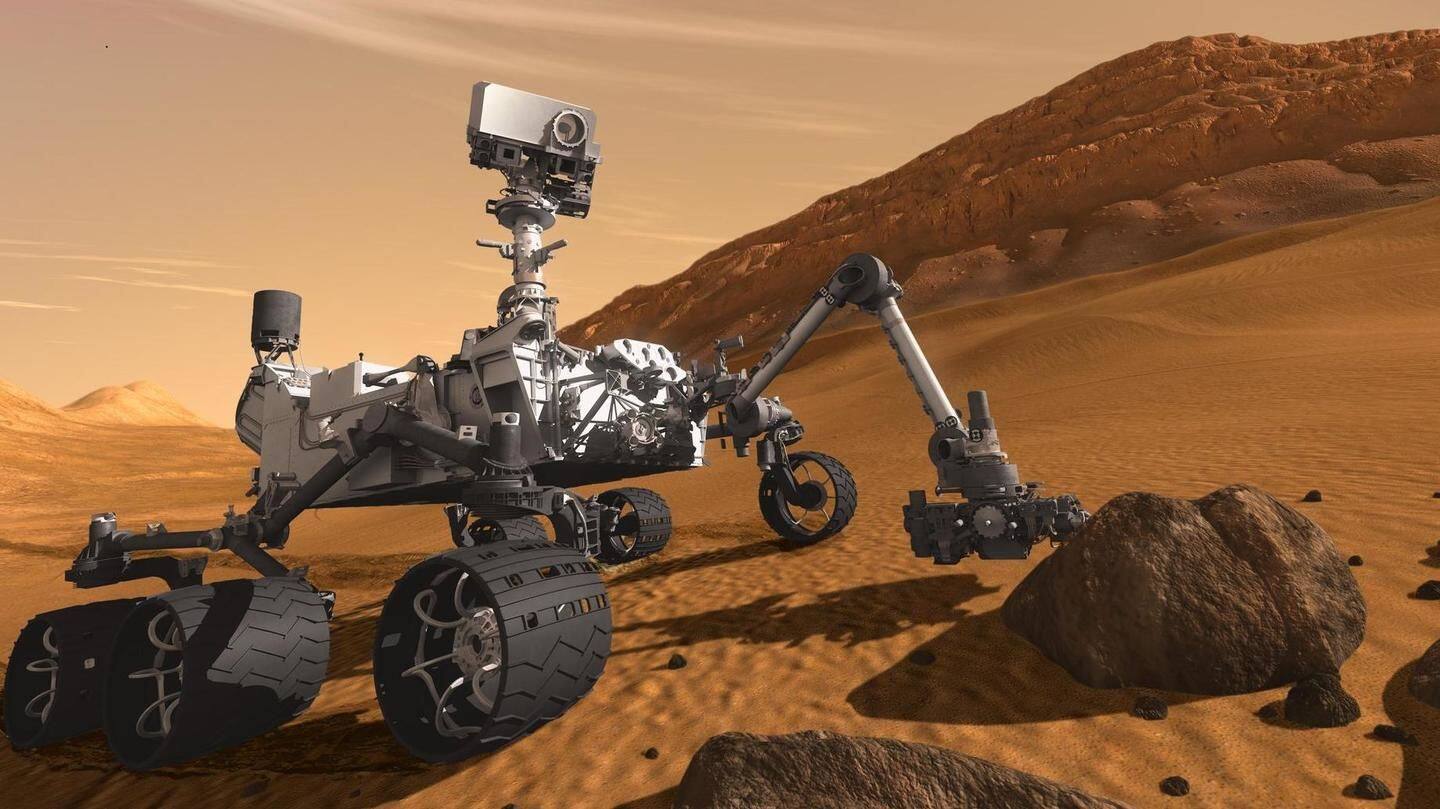
NASA discovers building blocks of life on Mars. 'Good sign'?
What's the story
NASA's Curiosity rover has discovered building blocks of life in 3-billion-year-old organic molecules on Mars, advancing the case for possible life on the red planet, US space-agency said. The scientists have found carbon, hydrogen in organic molecules, which may also contain oxygen, nitrogen and other elements. But, researchers said, these molecules also can be created by non-biological processes and aren't necessarily indicators of life.
Life on Mars
Findings will help to learn more about organic molecule
Thomas Zurbuchen, Associate Administrator for Science Mission Directorate at NASA, said he is confident that their ongoing-missions will unlock even more breathtaking discoveries. "Finding ancient organic molecules in top 5cm of rock that was deposited when Mars may have been habitable, bodes well to learn the story of molecules on Mars with future-missions," Jen Eigenbrode of NASA's Goddard Space Flight Center said.
Information
Water-lake held all ingredients necessary for life, says NASA
Data from Curiosity reveals that billions of years ago, a water lake inside Gale Crater held all the ingredients necessary for life, including chemical building blocks and energy sources, said the new findings published in the journal Science.
Variation
Scientists find sensational variation in Methane
Scientists also discovered that low levels of methane within Gale Crater repeatedly peak in summer months and drop in winter. Water-rock chemistry might have generated the methane, but scientists cannot rule out the possibility of biological origins. "This is the first time we have seen something repeatable in methane story, so it offers us a handle in understanding it," said Chris Webster of NASA.
Sedimentary rock
Sedimentary rocks formed billions of years ago
To identify organic material in Martian soil, Curiosity drilled into sedimentary rocks from four areas in Gale Crater. This mudstone gradually formed billions of years ago from silt that accumulated at bottom of the ancient lake. The rock samples were analyzed by SAM (Sample Analysis at Mars), which uses an oven to heat the samples (500-degrees-celsius) to release organic molecules from the powdered rock.
Carbon concentrations
Findings indicate carbon concentration on the order of 10 parts/mn
SAM measured small organic molecules that came off the mudstone sample. Some of these fragments contain sulphur. The results also indicate organic carbon concentrations on the order of 10 parts per million. This is close to the amount observed in Martian meteorites and about 100 times greater than prior detections of organic carbon on Mars' surface. Other molecules identified were thiophenes, benzene and toluene.